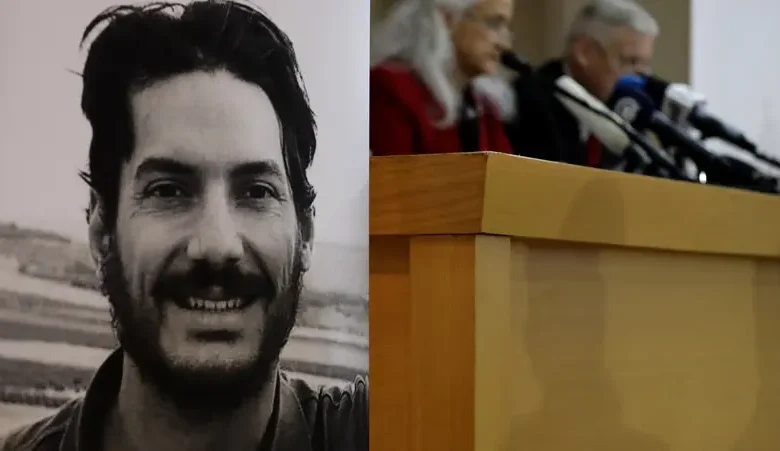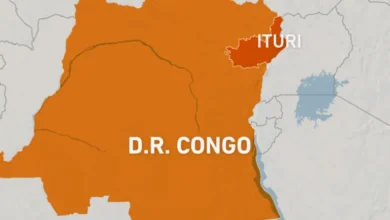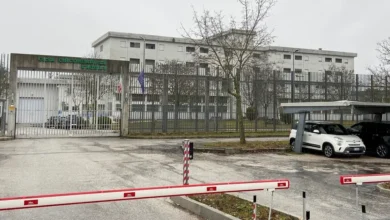In search for US journalist Austin Tice, a clue from 11 years ago

In the early days of 2013, an American man, dressed in ragged clothing, dodged between houses in the streets of Damascus’ upscale Mazzeh neighborhood looking for a civilian to take him to safety after more than five months of captivity in the concrete cells of a local prison.
The man, journalist Austin Tice, was taken captive during a reporting trip to Syria in August 2012. A former Marine, he had managed to slip out of his cell, one current and three former US officials and a person with knowledge of the event told Reuters. All were granted anonymity to speak freely about sensitive US intelligence.
Tice’s 2013 escape, reported here for the first time, was the first public sighting of the American after he disappeared, the officials said. Tice is now the focus of a massive manhunt following the ouster of Syrian President Bashar al-Assad this week after 13 years of civil war. Opposition forces have since released thousands of people from prisons in Damascus where al-Assad held political opponents, ordinary civilians and foreigners.
The American has not yet been found. There are no credible hints of his whereabouts but also no clear evidence that he is dead, a US official said. US officials say that Tice’s 2013 escape from prison, where he was believed to have been held by a pro-government militia, is the strongest evidence the US government has to suggest that forces loyal to al-Assad held Tice. This has over the years allowed American officials to pressure the al-Assad government directly about the matter. The White House declined to comment for this story. The CIA, Office of the Director for National Intelligence and the FBI did not immediately respond to requests for comment.
When Tice escaped, he was spotted by people living in the Mazzeh neighborhood, wandering the street. He entered the house of a well-known Syrian family, the name of which is being withheld for security reasons, a person familiar with the escape said. Tice was recaptured soon after his escape, one current and one former US official said. US officials believe it is likely that Tice was taken after his escape by forces who answered directly to al-Assad. One person with knowledge of the escape said Tice was potentially passed back and forth between several different government intelligence agencies in the following years.
The administration of former President Barack Obama received another tip in 2016 that Tice had been taken to a hospital in Damascus to receive care for an unknown illness, in what would be his second known sighting, a US official and a person familiar with the tip said. But current US officials are not as confident in that report as they are in his 2013 escape. Over the years, Tice’s family – which has led the charge in trying to find him – has spoken publicly of their frustration with the US government, saying it has not prioritized Tice’s release. They are now gathered in Washington in the hope they can soon celebrate his freedom.
The family declined a request for comment. “We believe he’s alive. We think we can get him back, but we have no direct evidence of that yet,” US president Joe Biden said last Sunday, fueling optimism about Tice’s fate. Over the last 12 years, US agencies, including the FBI, the State Department and the CIA, have gathered thousands of tips about Tice. Most are nearly impossible to verify.
Harrowing video
Tice, who worked as a freelance reporter for the Washington Post and McClatchy, was one of the first US journalists to make it into Syria after the outbreak of the civil war. In August 2012, during fighting in Aleppo, he was taken captive.
Weeks later, a YouTube video was published showing Tice blindfolded, hands tied behind his back. He was led up a hill by armed men in what appeared to be Afghan garb and shouting “God is great” in an apparent bid to blame extremists for his capture although the video only gained attention when it was posted on a Facebook page associated with al-Assad supporters.
Tice can be heard reciting a prayer, in Arabic, before saying in English: “Oh Jesus, oh Jesus.”
There are varying accounts of what happened to Tice in 2012, including who initially took him and where he was moved. Other journalists were taken captive around the same time. But as time passed and other reporters were freed, details about Tice remained scarce. The Obama administration had obtained intelligence that he was either in the hands of an extremist rebel faction or the Syrian government, two of the former officials said. But it had no way of verifying the information.
Over the past decade, some US officials and press advocates have lost faith in the assessment that Tice is alive in part because there has been no new, credible evidence to confirm his status. Others have maintained a sense of optimism, including some in the incoming Trump administration.
In 2019, Trump administration officials, including Kash Patel, then a US presidential aide and counterterrorism adviser, and Roger Carstens, special envoy for hostage affairs, traveled to Damascus to meet with Syrian officials about Tice. Current and former US officials said the Syrian government refused to offer proof of life and demanded the US reverse its Syria policy and withdraw US troops from the country in return for opening negotiations about Tice. The Biden administration has maintained contact with the Syrian government since then, but Assad’s officials were unwilling to negotiate until the US agreed to their demands. On Dec. 6, Austin Tice’s mother Deborah and her family told a press conference that a US government-vetted source had recently confirmed that Tice was alive and was being treated well.
“He is being cared for, and he is well,” Deborah Tice said.
But in the hours after the conference, US officials working on Tice’s case said they did not have any new information and that they were caught off guard by his mother’s statements.
This week, Carstens traveled to Beirut to coordinate the search for Tice. Other officials are also in the region, including Secretary of State Antony Blinken and Barbara Leaf, the head of the State Department’s Near East bureau.
“We’re determined to find him and bring him home to his family and loved ones,” Blinken told reporters Thursday.
Almost a week after al-Assad’s ouster, some US officials fear that Tice could have been killed during a recent round of Israeli airstrikes. Officials are also concerned that if Tice was being held underground in a cell, he may have run out of breathable air as al-Assad’s forces shut off the electricity in many of the prisons in Damascus before the president fled.
This week, reports emerged that an American man had been seen in Damascus, raising hopes that Tice had been freed.
But it wasn’t Tice. On Thursday, news broke that Missouri resident Travis Timmerman had been found after having been freed from prison by the opposition. Timmerman said he had traveled into Syria for a spiritual mission earlier this year and was arrested for entering the country illegally.










